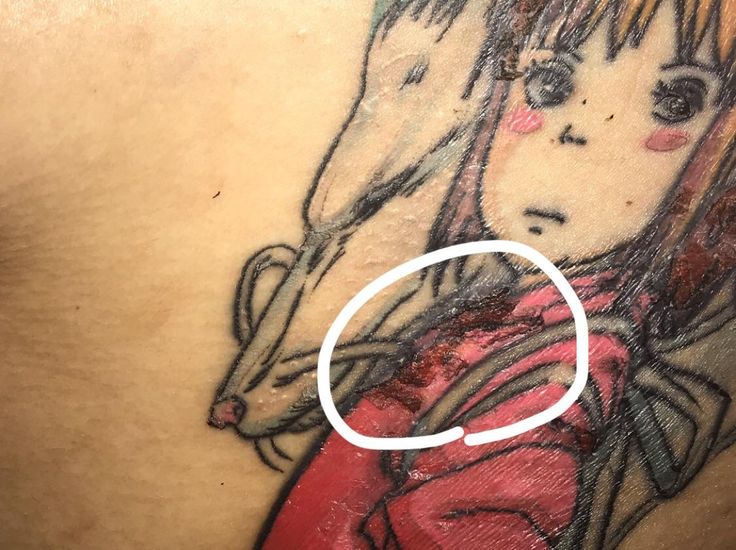Just got a new tattoo and itching to hit the gym? Hold up! Before you dive back into your workout routine, it’s crucial to know how long you should wait before exercising after getting inked. In this post, we’re breaking down everything you need to know about balancing your fitness regime with proper tattoo healing. From expert insights to practical aftercare tips, we’ve got you covered. Let’s ensure your new tattoo looks awesome without putting your health on the back burner.
Ready to find out? Let’s get started!
Contents
How Long Should You Wait to Exercise After Getting a Tattoo?

It is generally recommended to wait at least 48 hours before engaging in any physical activity that may rub or pull on the tattooed area. This allows the tattoo to set and minimizes the risk of irritation or damage. During this time, it’s crucial to follow proper aftercare instructions, such as keeping the tattoo clean and moisturized, to ensure optimal healing.
Factors to Consider Before Exercising:
When it comes to exercising after getting a tattoo, there are a few important factors you should consider to ensure proper healing and minimize any potential damage or irritation to your new tattoo. Here are some key points to keep in mind:
1. Healing Time: It’s crucial to give your tattoo enough time to heal before resuming regular exercise. The initial healing process usually takes about 2-3 weeks, but complete healing can take up to 4-6 weeks. Waiting for the proper healing period is essential to avoid complications or damage to the tattooed area.
2. Type of Exercise: Certain types of exercises can be more strenuous on the body and may cause more sweat and friction, which can be detrimental to the healing process. Vigorous cardio activities like running, cycling, or high-intensity interval training should be avoided during the initial healing phase.
3. Sweat and Friction: Sweat can irritate the fresh tattoo and slow down the healing process. With that in mind, it’s important to limit sweating as much as possible. This means avoiding activities that cause excessive sweat, as well as wearing loose-fitting, breathable clothing to minimize friction.
4. Safe Exercises: While you should avoid high-impact or intense exercises during the healing process, there are still safe exercises you can engage in. Low-impact activities like walking, gentle stretching, or light weightlifting can help maintain your fitness level without causing excessive strain on your tattooed area.
5. Listen to Your Body: Ultimately, the key is to listen to your body during the healing process. If you experience any discomfort, pain, or irritation in the tattooed area, it’s important to stop exercising and allow your body more time to heal.
Signs Your Tattoo is Not Healed Enough:

Here are a few indicators that your tattoo may still need more time to heal before you can hit the gym:
- Redness and Swelling: If your tattooed area is still red and swollen, it’s a clear sign that the healing process is not complete. These symptoms typically subside as the healing progresses. Exercising when your tattoo is still red and swollen can cause further irritation and discomfort.
- Tenderness to Touch: If your tattoo is sensitive to touch, it indicates that the area is still healing. Touching or bumping the tattoo during workouts can lead to unnecessary pain and potentially compromise the healing process.
- Flaking and Peeling: As your tattoo heals, you may notice some flaking and peeling. This is a natural part of the healing process. However, if your tattoo is still peeling excessively or the skin feels fragile, it may be an indication that it needs more time to heal before engaging in intense physical activity.
Which Exercises to Avoid After a New Tattoo?
Here are some exercises to avoid during the initial healing phase:
- High-impact exercises: Activities that involve a lot of bouncing or jarring movements, such as running, jumping, or HIIT (high-intensity interval training), should be avoided. These exercises can put excessive strain on the tattooed area and disrupt the healing process.
- Weightlifting: Heavy weightlifting can also be problematic due to the risk of exerting pressure on the tattoo. Lifting heavy weights may cause the skin to stretch or even tear, affecting the appearance and integrity of your tattoo.
- Excessive stretching: Engaging in exercises that involve excessive stretching, like yoga poses that put pressure on the tattooed area should be avoided. Overstretching can cause discomfort, irritation, and potentially even damage to the healing skin.
- Swimming: It’s best to avoid swimming, especially in pools, hot tubs, or natural bodies of water, during the initial healing phase. These environments can expose your tattoo to bacteria, chemicals, and other irritants that may impede the healing process.
Frequently Asked Questions:
Can I lift weights after getting a tattoo?
Avoid exercises that pull on, rub, or stretch your tattoo. For example, if your tattoo is on your forearm, skip upper-body lifts and focus on lower-body exercises instead.
Can I workout 3 days after getting a tattoo?
It is advised to wait at least 48 hours before engaging in strenuous physical activity and heavy sweating after getting a tattoo. Generally, it takes 4 to 6 weeks for a tattoo to fully heal.
Can I do cardio after getting a tattoo?
Most tattoo artists recommend refraining from working out for the first 2 weeks of healing, as the tattoo is most sensitive during this time. If your skin is still red and warm after getting inked, it means your body is still activating the immune system response.

Hello, I’m Ravindra. Over the years, I’ve immersed myself deeply into the world of fitness and health, transforming both my body and mind. Writing has allowed me to share my journey, insights, and expertise with those just starting out and seasoned fitness enthusiasts alike. Beyond just routines and diets, I believe in inspiring others to adopt a holistic approach to well-being.
